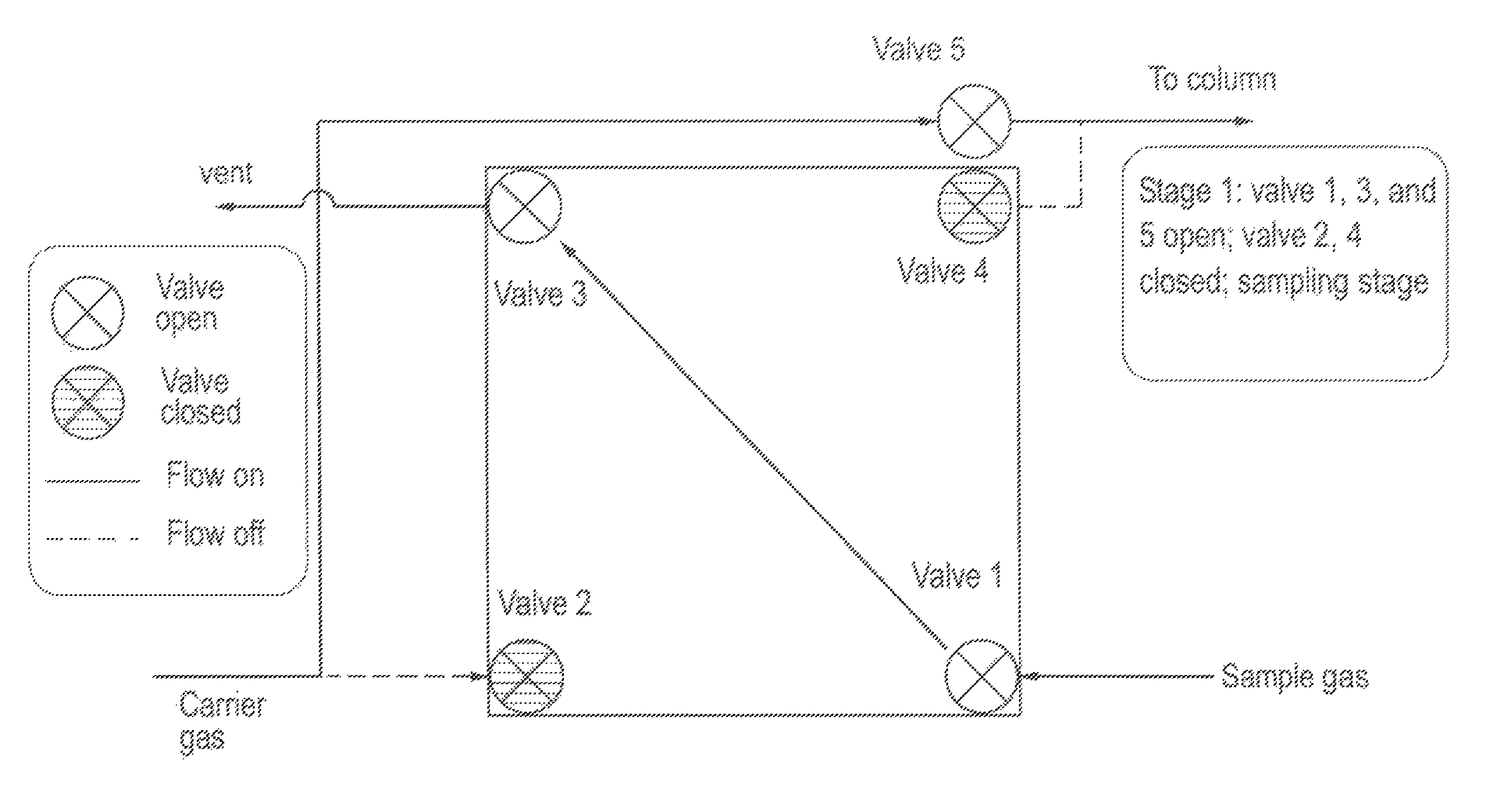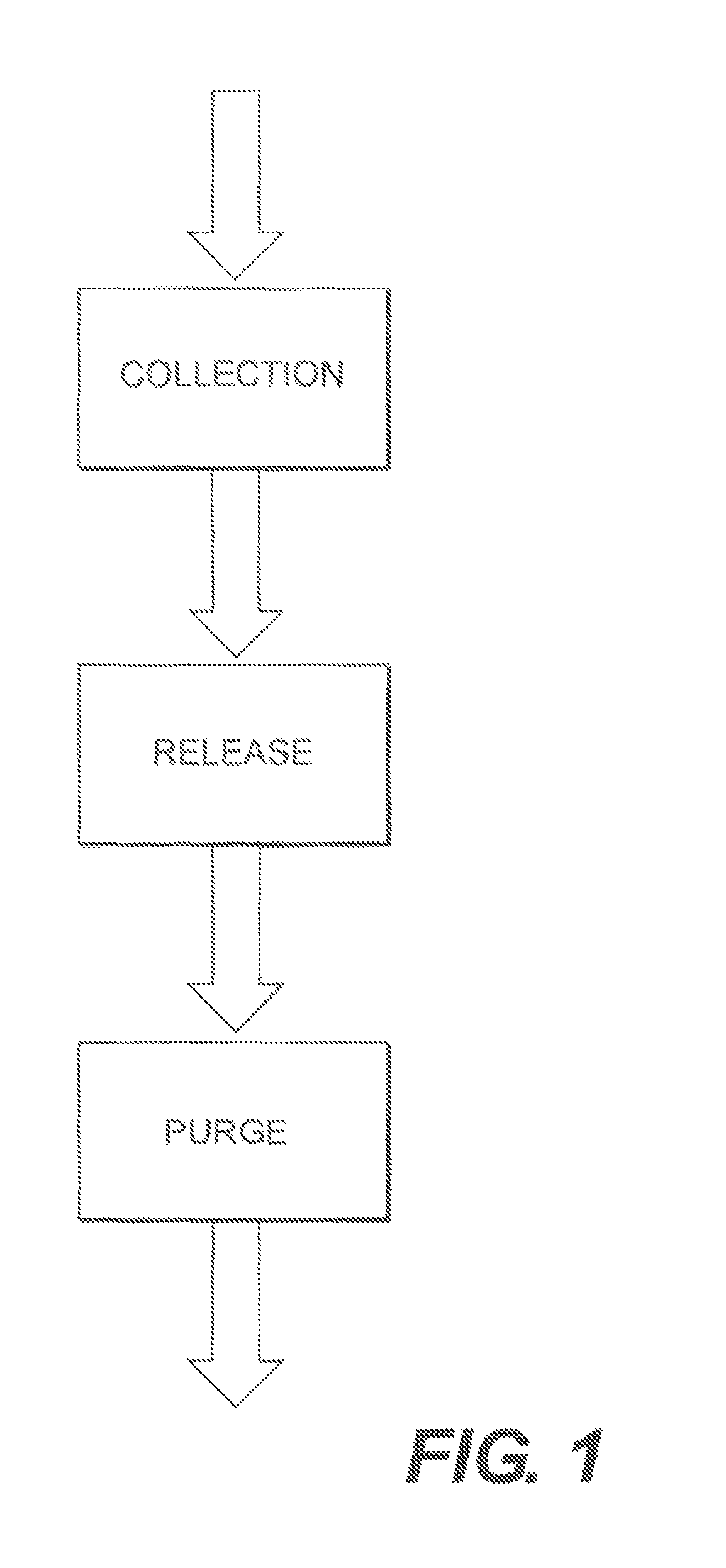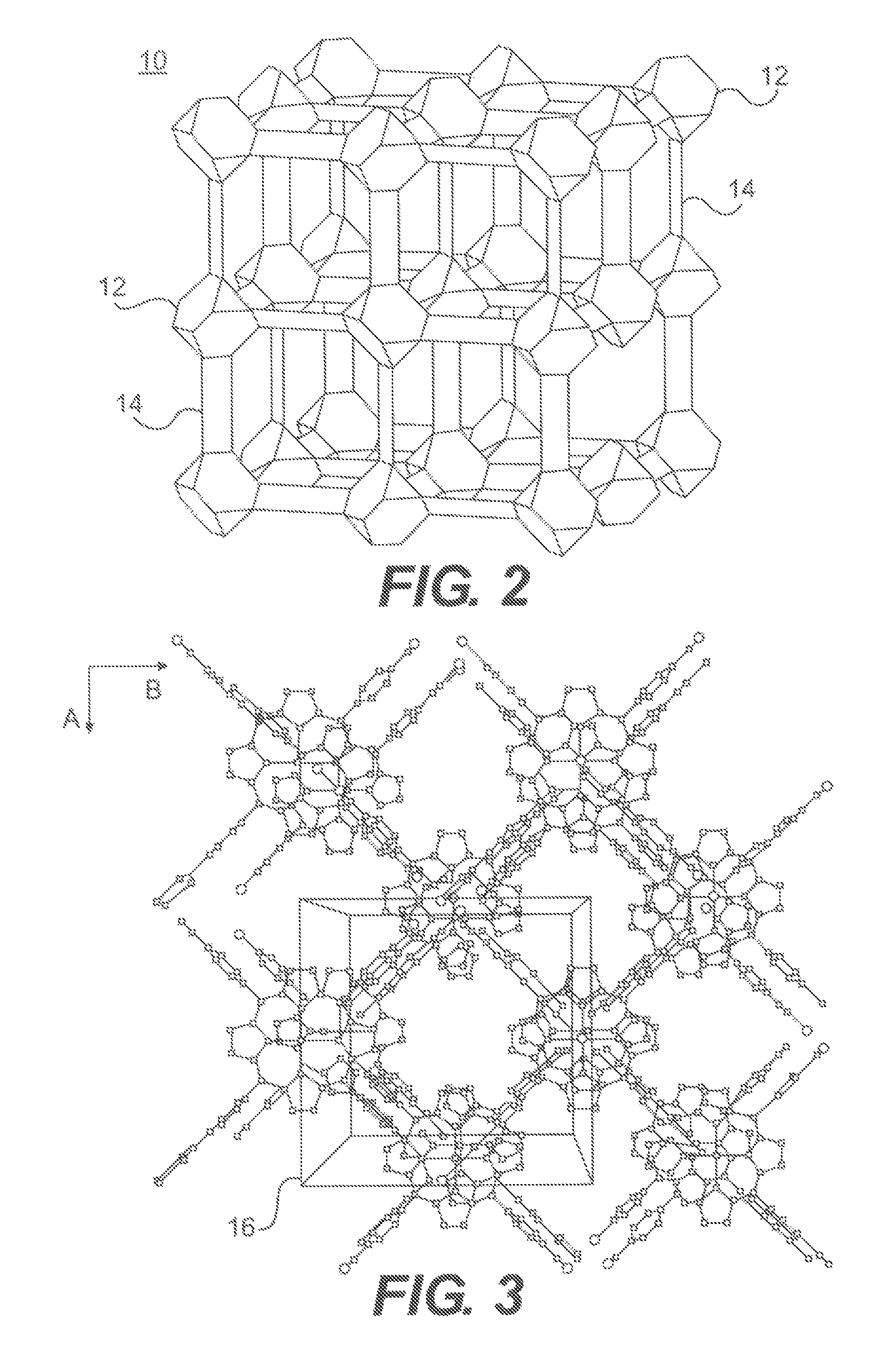High gain selective metal organic framework preconcentrators
a metal organic framework and high-gain technology, applied in the field of analyte collection, can solve the problems of large size, limited sensitivity of gc column or sensor, and large power requirements, and achieve the effect of enhancing selectivity
- Summary
- Abstract
- Description
- Claims
- Application Information
AI Technical Summary
Benefits of technology
Problems solved by technology
Method used
Image
Examples
example 1
[0114]Zn-MOF1 synthesis: An exact amount of zinc nitrate hexahydrate, Zn(NO3)2*6H2O, (0.18 g, 0.605 mmol) and 4,4′,4″,4′″-(21H,23H-porphine-5-10-15-20-tetrayl)tetrakis(benzoic acid), (0.199 g, 0.252 mmol) were dissolved in 10 mL diethylformamide. The solution was then sealed with a Pyrex sample vial and heated with a household microwave oven (800 W) for a reaction time of 80 seconds. The crystals obtained were dark purple with a cubic shape with sizes ranging from about 10 to about 30 microns.
example 2
[0115]Zn-MOF2 synthesis: An exact amount of zinc nitrate hexahydrate, Zn(NO3)2*6H2O, (0.1 g, 0.336 mmol) and 2-anilino-5-bromoterephthalic acid, (2-anilino-5-BrBDCH2) (0.0847 g, 0.252 mmol) were dissolved in 10 mL diethylformamide. The solution was then sealed with a Pyrex sample vial and heated with a household microwave oven (800 W) for a reaction time of 80 seconds. The obtained crystals were light yellow with a cubic shape with sizes ranging from 2 to 4 microns.
example 3
[0116]Zn-MOF3 synthesis: An exact amount of zinc nitrate hexahydrate, Zn(NO3)2*6H2O, (0.15 g, 0.504 mmol) and 2-trifluoromethoxy terephthalic acid, (2-trifluoromethoxy-BDCH2) (0.0946 g, 0.378 mmol) were dissolved in 10 mL diethylformamide. The solution was then sealed with a Pyrex sample vial and heated with a household microwave oven (800 W) for a reaction time of 80 seconds. The obtained crystals were yellow with a cubic shape, with sizes ranging from about 4 to about 7 microns.
PUM
| Property | Measurement | Unit |
|---|---|---|
| diameter | aaaaa | aaaaa |
| diameter | aaaaa | aaaaa |
| temperatures | aaaaa | aaaaa |
Abstract
Description
Claims
Application Information
 Login to View More
Login to View More - R&D
- Intellectual Property
- Life Sciences
- Materials
- Tech Scout
- Unparalleled Data Quality
- Higher Quality Content
- 60% Fewer Hallucinations
Browse by: Latest US Patents, China's latest patents, Technical Efficacy Thesaurus, Application Domain, Technology Topic, Popular Technical Reports.
© 2025 PatSnap. All rights reserved.Legal|Privacy policy|Modern Slavery Act Transparency Statement|Sitemap|About US| Contact US: help@patsnap.com



